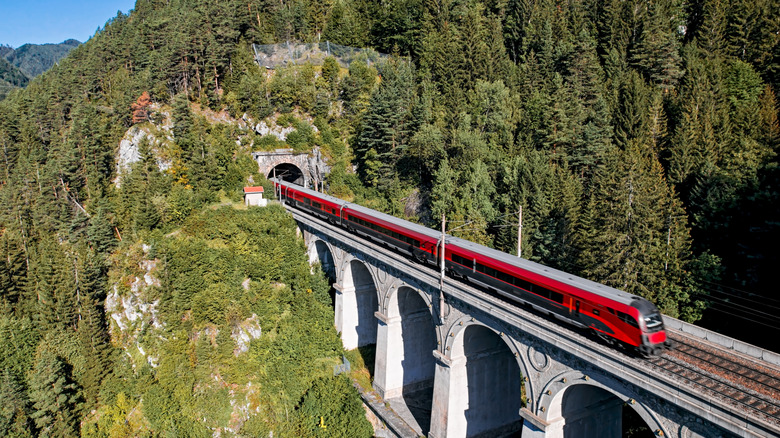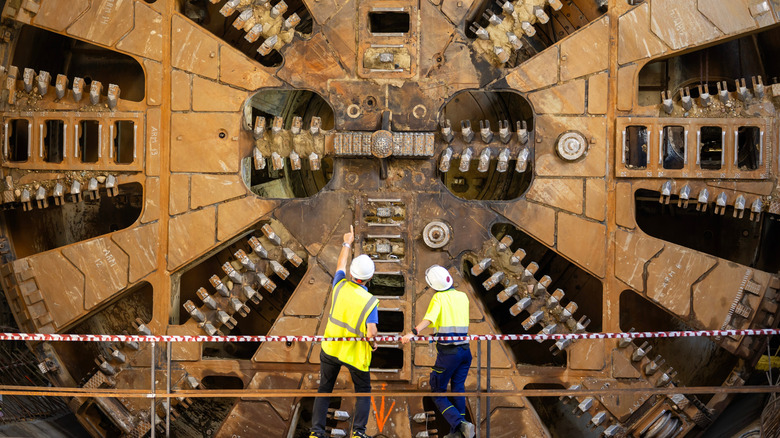2 Popular European Countries Will Be Linked By The World's Longest Underground Railway Connection In 2032
You are people watching with your partner on one of the patios in the busily humming streets in the historical district of Innsbruck, Austria, tucked away snuggly beneath the imposing shadows of the Alps that surround you. As your gaze wanders along the collage of Gothic, Baroque, and Imperial architecture, your eyes stop at the Stadtturm watchtower. You see that it's only half past noon, and a wild idea pops into your brain; why not substitute your beer and the Alps for some wine and the opera in Italy this evening? After all, it's 2032, and the new Brenner Base Tunnel between Austria and Italy is officially open. You could be in Verona by dinnertime, at the opera by sunset.
On September 18th, 2025, engineers at last saw light as the last rocks fell away deep beneath the Brenner Pass. A 40-mile feat of engineering, the Brenner Base Tunnel is the world's longest underground railway tunnel, linking Italy with Austria. By adding another route to what is known as the Scandinavian-Mediterranean Corridor and the Munich-Verona axis, a sophisticated network of roads spanning throughout most of southern, central, and northern Europe, this tunnel is bringing all of the continent closer together, at 4,600 feet underground.
Europe is known for some of the most breathtaking railroads in the world, linking diverse landscapes or one legendary city to another. The Brenner Pass itself is as old as the Roman Empire, having been a main entry point into Italy, and allowing for safe passage south through the Alps. It explains how one Alpine pass would eventually grow congested after centuries of active use, with the increasing demands of the economy and trade slowing down both business and pleasure.
The tunnel is no boring matter
The aim of the Brenner Base Tunnel is primarily to alleviate the most strained section of the Brenner Pass, as millions of vehicles and goods have been suffering from delays and increasing traffic. Due to the outdated infrastructure of the original railway, completed in 1867, the solution to go underground and trade scenic, yet winding and steep rails for an arrowhead tunnel shooting straight through, proves to be a modern, pragmatic solution. The project's leading company, Italian-based Webuild, has announced that once completed, the trains should run at approximate speeds of 155 miles per hour, cutting down travel time between Munich to Verona from five hours to three..
One could say that railways are part and parcel of Tyrol, the region that stretches across Austria and northern Italy, and some of the most beautiful Alpine rides can be enjoyed comfortably here. Keeping practicality and comfort in mind, the Brenner Base Tunnel will eventually facilitate travel in what is known to be one of the busiest alpine passes between the traditionally accepted borders between the European North and the Mediterranean South. The breakthrough ceremony was attended by both the Italian Prime Minister Giorgia Meloni and Austrian Chancellor Christian Stocker, the latter commenting on it being a "historic moment for Austria and Italy" (via Railway Gazette).
Albeit with a few setbacks currently affecting the supporting infrastructure around the tunnel itself due to Austrian austerity measures, optimism remains high with the Brenner Base Tunnel scheduled to open on time. With a stress-free, money-saving European train ticket to jump between countries in hand, you will be sitting down in the Roman amphitheater of the Arena di Verona for your evening opera, and smile to yourself, remembering the old saying that, in some way, all roads do lead to Rome.

